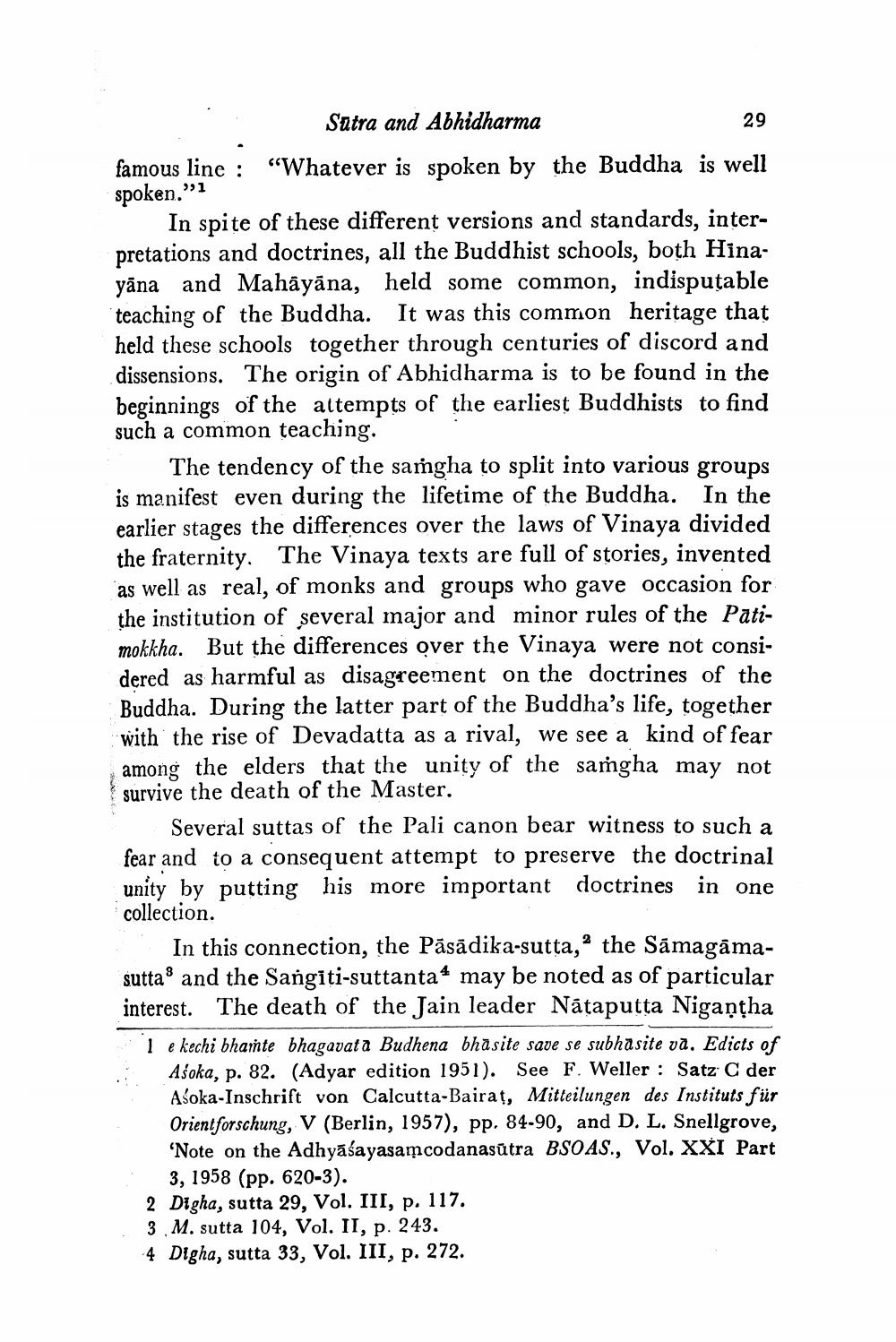________________ Satra and Abhidharma 29 famous line : "Whatever is spoken by the Buddha is well spoken." In spite of these different versions and standards, interpretations and doctrines, all the Buddhist schools, both Hinayana and Mahayana, held some common, indisputable teaching of the Buddha. It was this common heritage that held these schools together through centuries of discord and dissensions. The origin of Abhidharma is to be found in the beginnings of the attempts of the earliest Buddhists to find such a common teaching. The tendency of the samgha to split into various groups is manifest even during the lifetime of the Buddha. In the earlier stages the differences over the laws of Vinaya divided the fraternity. The Vinaya texts are full of stories, invented as well as real, of monks and groups who gave occasion for the institution of several major and minor rules of the Patimokkha. But the differences over the Vinaya were not considered as harmful as disagreement on the doctrines of the Buddha. During the latter part of the Buddha's life, together with the rise of Devadatta as a rival, we see a kind of fear among the elders that the unity of the samgha may not survive the death of the Master. Several suttas of the Pali canon bear witness to such a fear and to a consequent attempt to preserve the doctrinal unity by putting his more important doctrines in one collection. In this connection, the Pasadika-sutta," the Samagamasutta(r) and the Sangiti-suttanta+ may be noted as of particular interest. The death of the Jain leader Nataputta Nigantha le kechi bhamte bhagavata Budhena bhasite save se subhasite va. Edicts of Asoka, p. 82. (Adyar edition 1951). See F. Weller : Satz C der Asoka-Inschrift von Calcutta-Bairat, Mitteilungen des Instituts fur Orientforschung, V (Berlin, 1957), pp. 84-90, and D. L. Snellgrove, 'Note on the Adhyasayasamcodanasutra BSOAS., Vol. XXI Part 3, 1958 (pp. 620-3). 2 Digha, sutta 29, Vol. III, p. 117. 3 M. sutta 104, Vol. II, p. 243. 4 Digha, sutta 33, Vol. III, p. 272.




